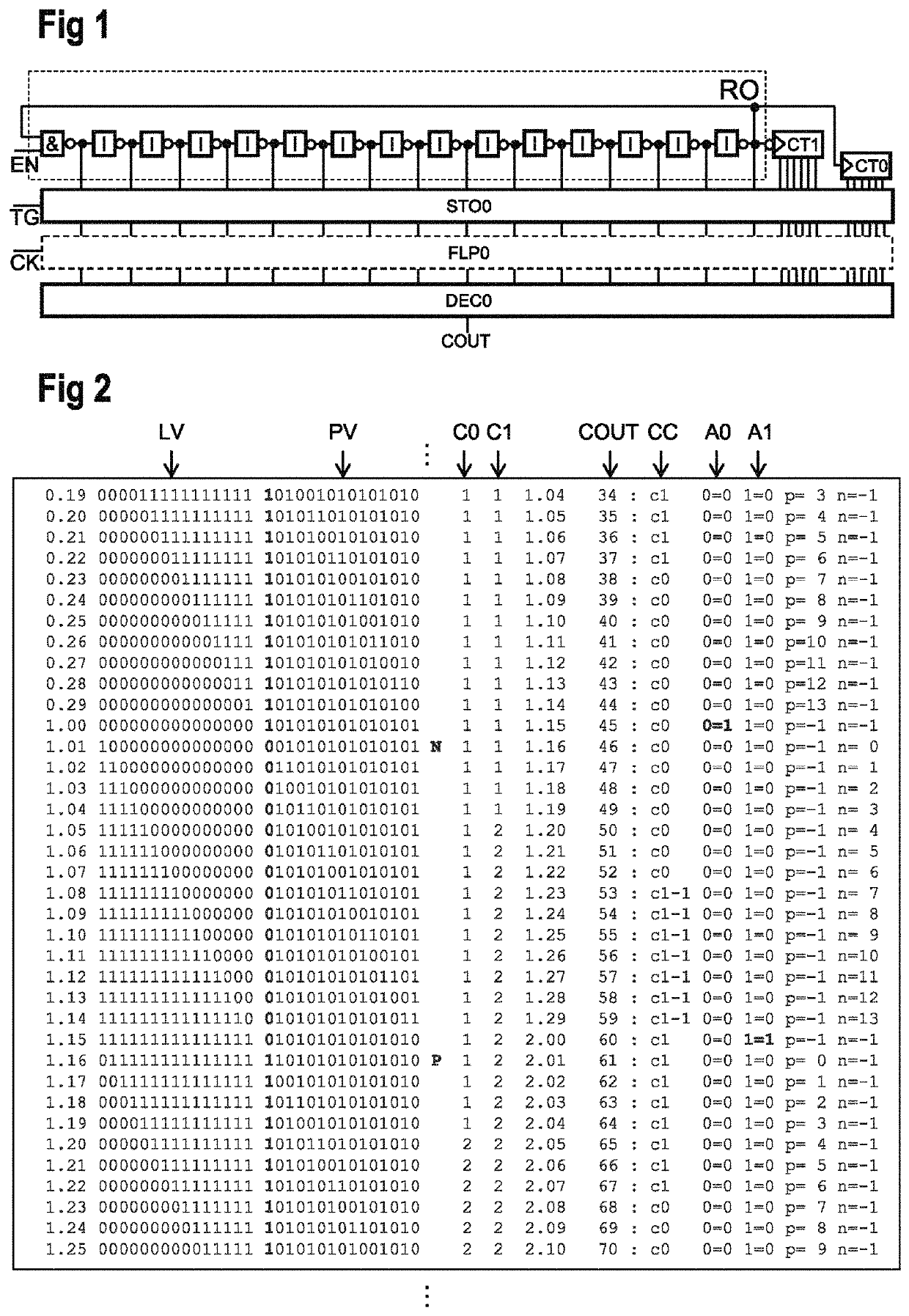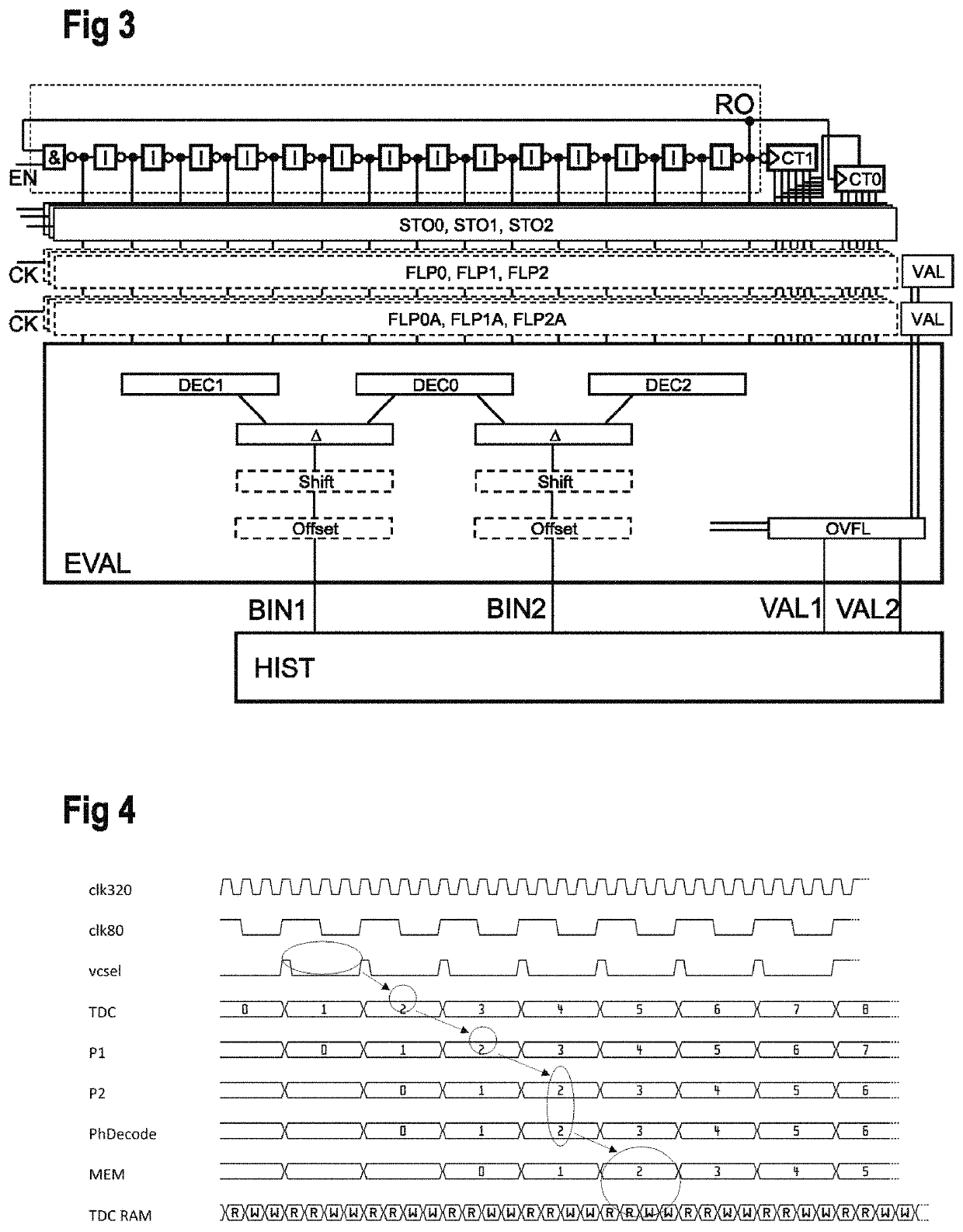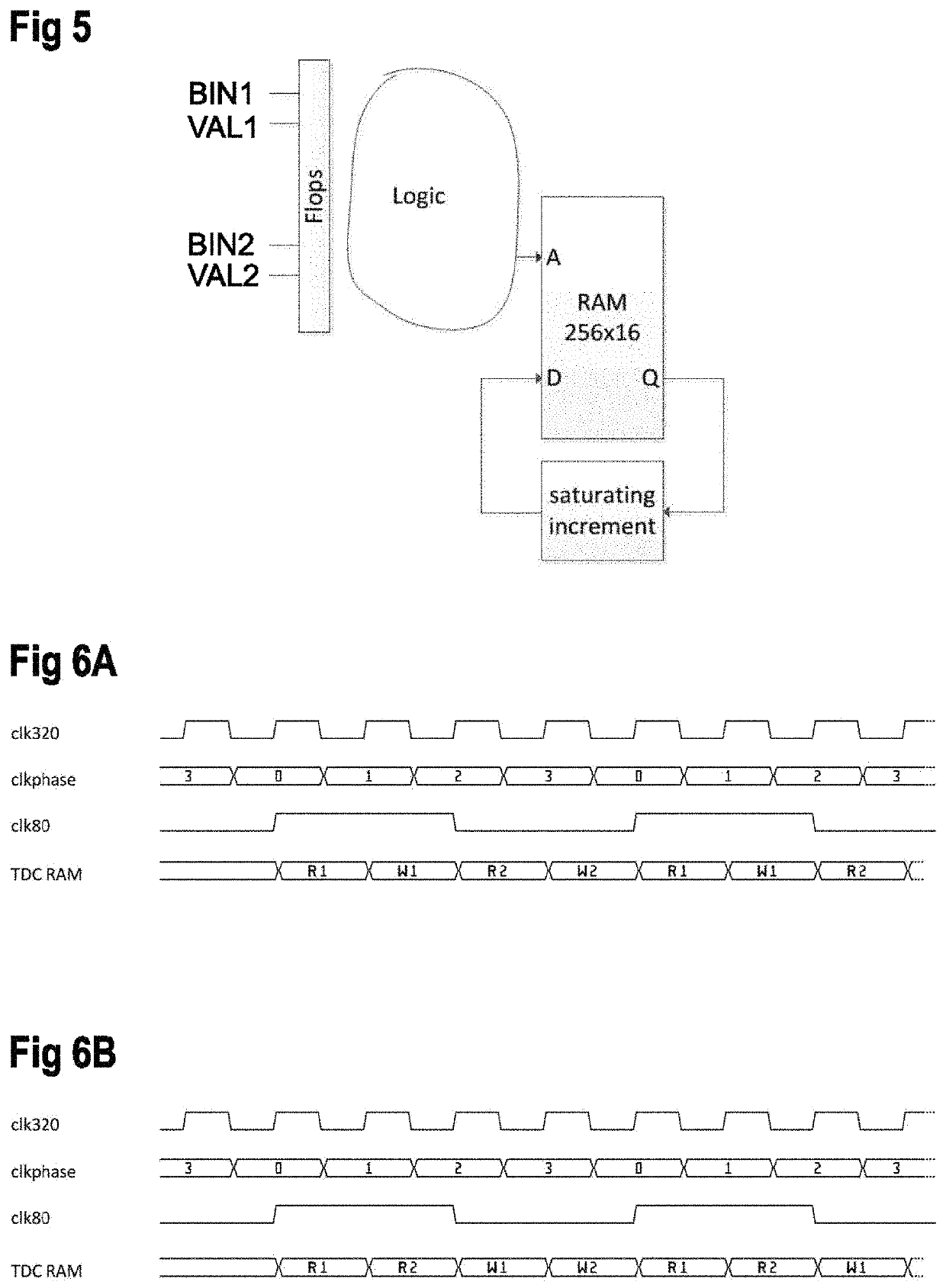Time-to-digital converter and conversion method
a converter and digital technology, applied in the field of time-to-digital converter and time-to-digital conversion methods, can solve the problems of only detecting asynchronous nature of physical effects measured, and inability to detect the average distance to all objects in a scene, so as to achieve the effect of higher accuracy
- Summary
- Abstract
- Description
- Claims
- Application Information
AI Technical Summary
Benefits of technology
Problems solved by technology
Method used
Image
Examples
Embodiment Construction
[0036]FIG. 1 shows an example embodiment of a time-to-digital converter arrangement according to the improved timing concept. The arrangement comprises a ring oscillator RO, a first counter CT0, a second counter CT1, a storage element STO0, an optional stability element FLP0 and a decoder DEC0.
[0037]In this example embodiment, the ring oscillator is formed as a 15-stage ring oscillator acting as a fine counter and consists of a two-input NAND gate followed by fourteen inverters I that may be implemented as CMOS inverters. According to the common principle of a ring oscillator, the output of the last inverter is connected to one of the inputs of the input NAND gate. A second input of said NAND gate is provided with an enable signal EN for starting respectively stopping the oscillation process within the ring oscillator RO. The number of fifteen elements within the ring oscillator RO is chosen arbitrarily for this example and can be readily varied depending on the desired application....
PUM
 Login to View More
Login to View More Abstract
Description
Claims
Application Information
 Login to View More
Login to View More - R&D
- Intellectual Property
- Life Sciences
- Materials
- Tech Scout
- Unparalleled Data Quality
- Higher Quality Content
- 60% Fewer Hallucinations
Browse by: Latest US Patents, China's latest patents, Technical Efficacy Thesaurus, Application Domain, Technology Topic, Popular Technical Reports.
© 2025 PatSnap. All rights reserved.Legal|Privacy policy|Modern Slavery Act Transparency Statement|Sitemap|About US| Contact US: help@patsnap.com



